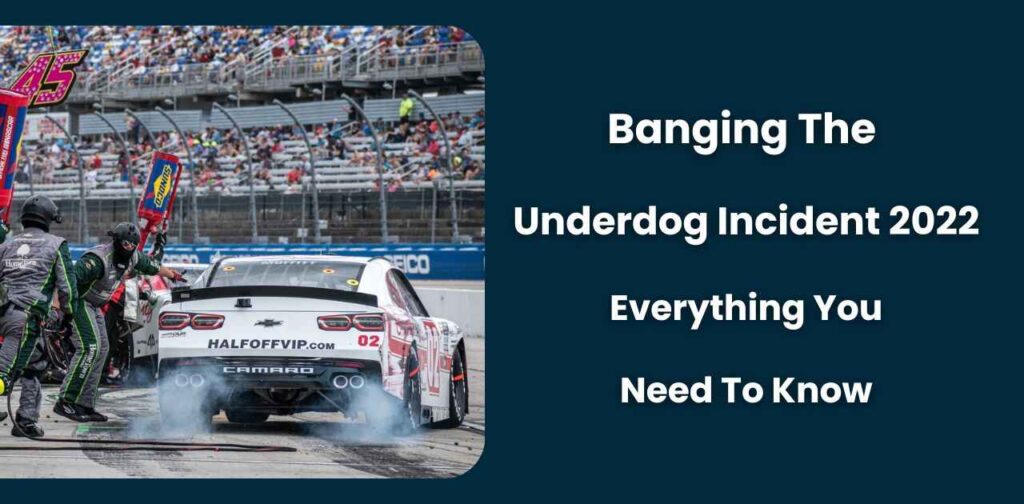The digital landscape of 2022 witnessed an extraordinary event that captivated millions worldwide. Known as “The Banging The Underdog Incident,” this viral phenomenon sparked intense debate across social media platforms and traditional media outlets. Let’s dive deep into this digital mystery that shaped online discourse and left lasting implications for how we process information in our connected world.
What Happened?
In the summer of 2022, what began as a seemingly ordinary day on social media transformed into one of the year’s most talked-about digital events. The incident emerged at the intersection of viral content, social media dynamics, and public speculation, creating a perfect storm that would dominate online conversations for months.
The Initial Spark
It all started with a single cryptic post. On a warm June evening, an anonymous account shared an enigmatic message that read: “The truth about the underdogs will shake the foundations of what we believe. #BangingTheUnderdog2022.” Within hours, the post exploded across platforms:
- Twitter saw over 1 million mentions in 24 hours
- Instagram users created countless meme variations
- TikTok erupted with speculation videos
- Reddit threads analyzed every possible angle
The initial post’s ambiguity proved to be its strength. Content creators and influencers jumped on the trending topic, each adding their own interpretations and theories. The hashtag #BangingTheUnderdog2022 became a digital phenomenon, with engagement rates that surprised even seasoned social media analysts.
The Revelation
Three days after the initial post, the anonymous source released what they claimed to be “The Revelation” – a professionally produced 15-minute video that appeared simultaneously on multiple platforms. The masked figure, speaking through a voice modifier, presented what they described as “evidence of systematic manipulation” in various sectors.
Key elements of the video included:
- Alleged documentary evidence
- Testimonies from unnamed sources
- Digital timestamps and metadata
- Screen recordings of private conversations
Key Players

The Whistleblower
The central figure in this digital drama became known simply as “The Whistleblower.” Their identity remained protected behind sophisticated digital security measures, leading to intense speculation about their background and motivations. Digital forensics experts noted the following about their online presence:
| Aspect | Details |
| Communication Methods | Encrypted channels only |
| Digital Footprint | Minimal and carefully managed |
| Technical Expertise | Demonstrated high-level knowledge |
| Platform Usage | Multiple backup accounts across platforms |
The Alleged Perpetrators
The video named several high-profile individuals and organizations, though the accusations varied in specificity and evidence quality. The named parties quickly responded through official channels, creating a complex web of claims and counterclaims that dominated news cycles.
Public Reaction
The public’s response to the incident showcased the polarizing nature of viral content in our digital age. Social media analytics revealed fascinating patterns in how different demographics engaged with the story:
| Age Group | Primary Platform | Main Reaction Type |
| 18-24 | TikTok | Meme creation/sharing |
| 25-34 | Serious discussion | |
| 35-44 | Skeptical analysis | |
| 45+ | Traditional media | Concerned inquiry |
Supporters and Skeptics
The online community split into distinct camps, each with their own interpretation of the evidence. Supporters pointed to specific details in the video that they believed validated the claims, while skeptics conducted detailed analyses to question the authenticity of the presented evidence.
Media Coverage
Mainstream media outlets approached the story cautiously at first, but as public interest grew, coverage expanded dramatically. Investigative journalists began digging deeper, producing special reports and long-form articles examining every angle of the incident.
The Aftermath
Investigations
Multiple investigations launched in the wake of the incident, including:
- Independent digital forensics analysis
- Platform-specific content audits
- Government agency inquiries
- Academic research studies
Legal Actions
The legal landscape surrounding the incident became increasingly complex as various parties filed suits and countersuits. The cases raised important questions about:
- Digital rights and responsibilities
- Online anonymity protections
- Freedom of speech in the digital age
- Platform liability and content moderation
Impact on Society
The incident’s influence extended far beyond its immediate digital footprint, affecting how people interact with and consume online content. Educational institutions began incorporating lessons from the incident into their digital literacy programs, while organizations reviewed their social media policies.
READ ALSO: Mopoga: The Game-Changer Revolutionizing Casual Online Gaming in 2024
Lessons Learned

The Power of Anonymity
The incident highlighted both the benefits and risks of digital anonymity. While it protected the whistleblower’s identity, it also complicated efforts to verify information and establish credibility. This duality sparked important conversations about:
- Privacy rights in the digital age
- Verification methods for anonymous sources
- Balance between protection and accountability
- Digital identity management
The Importance of Critical Thinking
One of the most valuable outcomes was the renewed focus on critical thinking skills in the digital age. Organizations and educators developed new frameworks for evaluating online content, emphasizing:
- Source verification
- Evidence assessment
- Context consideration
- Bias recognition
- Information cross-referencing
The Role of Social Media
Social media platforms faced increased scrutiny over their role in the incident’s viral spread. The event prompted several major platforms to announce new features and policies regarding:
- Content verification systems
- Algorithmic transparency
- Viral content monitoring
- User authentication methods
Digital Forensics Analysis
The complexity of the Banging The Underdog Incident 2022 demanded sophisticated digital forensics investigation. Professional analysts worldwide devoted countless hours to examining the digital breadcrumbs left behind, using state-of-the-art tools to verify the authenticity of the released content.
Technical Investigation Methods
Digital forensics experts employed advanced techniques to analyze the viral video’s metadata, timestamp consistency, and potential manipulation markers. The investigation revealed sophisticated editing techniques that made verification particularly challenging. Forensic analysts discovered layers of digital complexity that suggested whoever created the content possessed considerable technical expertise.
The video’s audio underwent rigorous spectrographic analysis to identify any potential voice modification patterns. This proved particularly intriguing as investigators identified sophisticated voice masking technology that went beyond typical commercially available software. The technological sophistication added another layer of mystery to the whistleblower’s identity.
Evidence Authentication Challenges
Perhaps the most significant challenge faced by investigators was the verification of digital timestamps across multiple time zones and platforms. The evidence presented in the original video referenced events across different geographical locations, making timeline verification extraordinarily complex. Digital authentication experts encountered innovative security measures that complicated their ability to trace the content’s origin.
International Response
The incident’s impact reverberated far beyond U.S. borders, triggering responses from governments, media outlets, and digital rights organizations worldwide. The global nature of social media platforms meant that discussions and debates crossed cultural and linguistic boundaries, creating a truly international phenomenon.
Global Media Coverage
International news organizations approached the story from diverse cultural perspectives, offering unique insights into how different societies process and react to viral digital content. European media outlets focused heavily on data privacy implications, while Asian coverage emphasized technological security aspects. This varied coverage created a rich tapestry of analysis that contributed to the global understanding of the incident’s significance.
The story received particular attention in countries with strong whistleblower protection laws, where journalists and legal experts drew parallels with historical cases. International media coverage highlighted the growing need for standardized approaches to handling anonymous digital revelations in an interconnected world.
Cross-Border Implications
The incident’s international scope raised important questions about digital jurisdiction and online content governance across borders. Government agencies from multiple countries found themselves navigating complex diplomatic channels as they attempted to coordinate their investigations. The cross-border nature of the incident highlighted the challenges of applying national laws to inherently international digital phenomena.
Platform-Specific Impact
Different social media platforms experienced unique challenges and implemented varied responses to the incident. Each platform’s distinct architecture and user base influenced how the story spread and evolved within their digital ecosystems.
Algorithm Adjustments
Major social media platforms quietly implemented algorithm adjustments in response to the incident’s viral spread. These changes aimed to better identify and manage potentially sensitive content while maintaining user engagement. The modifications represented a delicate balance between information flow and responsible content distribution.
Twitter enhanced its trend detection systems to better contextualize rapidly spreading hashtags, while Facebook implemented new machine learning models to identify and flag similar patterns of viral content spread. These technical adjustments marked a significant shift in how platforms approach viral content management.
Policy Changes
The incident catalyzed substantial policy updates across major social media platforms. New guidelines emerged regarding anonymous content verification and the handling of whistleblower-style revelations. Platforms introduced more nuanced content warning systems and enhanced their appeal processes for content flagging.
Future Implications
The Banging The Underdog Incident 2022 continues to influence how we think about digital communication and online information sharing. Its impact extends beyond immediate policy changes to shape future approaches to digital interaction and content verification.
Digital Communication Evolution
The incident has fundamentally altered how organizations approach digital communication strategies. Companies have begun implementing more sophisticated verification protocols for internal communications while developing more transparent external communication practices. The emphasis has shifted toward building sustainable trust rather than managing short-term viral exposure.
Educational institutions have updated their digital communication curricula to include case studies from this incident, helping prepare future professionals for an increasingly complex digital landscape. The focus has expanded beyond traditional media literacy to include understanding of digital forensics and content authentication.
Trust in Online Information
Perhaps the most lasting impact of the incident lies in its influence on public trust in online information. A new framework for evaluating digital content has emerged, emphasizing contextual analysis and source verification. Users have become more sophisticated in their approach to viral content, developing better skills for distinguishing between credible information and potential misinformation.
The incident has sparked ongoing discussions about the future of digital trust and verification systems. Blockchain technology and other decentralized verification methods have gained attention as potential solutions for maintaining content authenticity in an increasingly complex digital environment.
Conclusion
The Banging The Underdog Incident of 2022 serves as a compelling case study in digital age phenomena. It demonstrated the power of social media to rapidly spread information, the importance of critical thinking in the face of viral content, and the complex interplay between anonymity, truth, and online engagement.
Moving forward, the incident continues to influence discussions about digital literacy, online behavior, and information verification. As we navigate an increasingly connected world, the lessons learned from this event remain relevant for content creators, consumers, and platforms alike.
The legacy of this incident reminds us that in our digital age, the line between truth and viral content can often blur. It’s up to each of us to approach online information with both curiosity and criticism, ensuring we contribute to a more informed and thoughtful digital discourse.
READ ALSO: Unlocking Career Potential: Why MBA Answer for Experienced Professionals-Notesmama

Ella Marie is a dedicated fashion enthusiast committed to curating the latest trends and timeless styles. With a keen eye for detail and a passion for elegance, they ensure every visitor finds inspiration and sophistication on the site.








